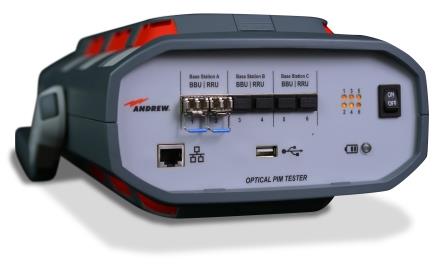Some of the ongoing trends in network testing are the use of simplified or “de-skilled” equipment so that basic test performance and interpretation isn’t limited to radio frequency engineers; and the increasing use of analytics and reporting, as well as cloud connectivity to improve efficient use of instruments.
Fluke Networks is hitting on all of those trends with its expanded Link Solutions offerings. I spoke with Fluke CTO James Kahkoska recently about the launch, and he said that disruptive computing capabilities in the form of mobility, cloud, analytics and storage have helped the company trim the size, complexity and cost of test equipment so that more units can be available to more people, including nontechnical experts who simply have to wait for an LED to turn red or green to get basic information about how a network is functioning.
Link Solutions has three parts: Fluke’s LinkRunner AT network tester; a new model added to Fluke’s LinkSprinter line of pocket-sized testers; and the Link-Live Cloud Service that presents test results from both types of equipment on a project. Fluke is offering a basic “Essentials” cloud service for free and customers can bump up to the Job Pro option with expanded features for $48 a year with unlimited testing and support for up to 10 testers.
The new LinkSprinter model measures cable status and length, can flash the hub port, and accommodate data from up to 12 tests compared to four in earlier models.
“For way too long in test and measurement, it’s been a huge hassle for testing installations in the field – you have to get their testers back and plug into a USB, and have a special application when you plug it in,” Kahkoska said. Now, he explained, test results are pushed directly from the testing device to the cloud and can be e-mailed to project managers, installers and anyone else who needs the information to track work at a site. Installers can include pictures of access points so that the equipment model information is recorded, or make notes so that the specific location of a radio – under the third tile from the north wall, etc. – is documented.
Fluke has seen significant interest from value-added resellers, he said, usually those certified in installing particular vendors’ equipment.
“They don’t own the network, the private network owner does, yet they’re tasked to install endpoints on that system. You can easily get into the blame game, where the guy shows up to install the equipment and the network guys say, ‘you’re good to go’ and you plug it in and things aren’t working,” Kahkoska said, adding that problems can surface in power over Ethernet or provisioning on the switch. LinkSprinter will let that installer know whether there is PoE access and a link so the installer has some guidance as to whether the basic elements are in place for a successful installation.
“If you’re installing any sort of radio with an Ethernet jack on the end of a cable, this is a great asset to document your work,” Kahkoska said.
• Kaelus has launched its new iVA cable and antenna analyzer for testing VSWR/return loss and locating return loss faults in RF infrastructure. The handheld unit weighs 1.4 pounds and is controlled via Bluetooth, plugs directly into the device under test, and includes software for generating and completing test reports on-site, as well as geotagging with Google Maps so that test measurements can be plotted and included in site reports.
Test and measurement news from MWC2015
A few things that didn’t make it into the initial round-up of MWC2015 news:
• Rohde & Schwarz and Prisma had a four-component-carrier Carrier Aggregation demo, with 4CC in the downlink achieved with 2×2 MIMO and a downlink data rate of a whopping 600 Mbps (Category 11 speeds, for those keeping track). The continued evolution of LTE-Advanced, including testing for 2 and 3CC CA, was one of the top network testing trends coming out of MWC and the ability to examine 4CC pushes things even further. It has only been within about the past year that more widespread support for 3CC has been cropping up in vendor offerings, so the move to 4CC so quickly – when 2CC is only in limited, real-world deployment as it is – seems like some pretty rapid evolution.
• CommScope launched an interesting new PIM test offering in the form of its new Optical PIM tester, which supports an active PIM test over the Common Public Radio Interface by connecting to a cell site baseband unit.

“As PIM requirements become more stringent as demanded by LTE networks, it gets harder to determine if there is a PIM problem needing remediation,” said Morgan Kurk, SVP of wireless for CommScope, in a statement. “The Optical PIM Tester utilizes an interface that is not susceptible to creating PIM and thus prevents testing from becoming part of the problem. Its simplicity enables PIM testing to become part of standard network acceptance and preventative maintenance processes.”
Kurk also said that “the intense scrutiny of PIM is not going away, and we envision a resource like our optical PIM tester will become a fundamental part of every operator’s effort to minimize PIM.”
• And if you missed the webinar on Wednesday that examined small cell testing, check out the archived version and you can download the related report. We had a very lively discussion with participants from Small Cell Forum, Anite, Rohde & Schwarz and Accedian Networks, covering everything from efforts in interoperability testing and the ETSI/Small Cell Forum plugfests, to issues and trends in RF testing and backhaul testing for small cells.

